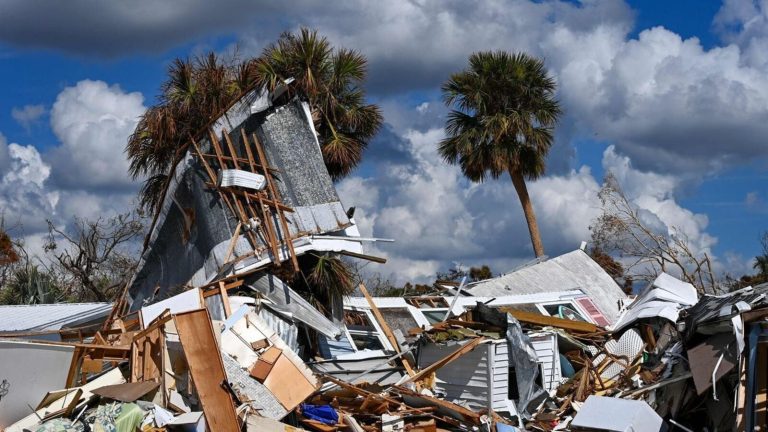With extreme weather events that include severe cyclonic storms and heatwaves becoming normal now, climate change is real. Climate change can hit people in multiple ways including loss of livelihood and income loss that may last for a few days, weeks or even months. To mitigate the losses arising from climate change, Bajaj Allianz General Insurance has come up with a ‘ClimateSafe’ insurance policy.
Here is a quick guide on its features and benefits:
What does it cover and who can opt for it?
ClimateSafe, which is a parametric insurance policy wherein payouts are triggered when certain specified parameters are met, covers increased living costs due to higher electricity use, unexpected commuting expenses, reduced sales during extreme weather, supply chain delays from flooding, leaks from prolonged rainfall, accidents caused by excessive rain, loss of income for daily wage workers due to severe weather, damage to household items from floods and heat waves, and event cancellations due to adverse weather.
Customers can buy Bajaj’s climate risk insurance multiple times during the year, with automatic claim settlements happening within seven days without any intimation required from the customer and minimal documentation requirements.
“This product is designed to provide financial protection to those who are significantly vulnerable to the impact of climate change,” Bajaj Allianz said. ClimateSafe is suitable for individuals who rely on daily earnings, which makes them highly vulnerable to climate risks. It is specifically tailored to meet the needs of retail customers, office goers, auto/taxi drivers, retail shop owners, delivery agents, home service professionals, gig workers, home residents, and event attendees facing climate-related income loss or increased expenses due to climate-related risks, including extreme heat, cold waves, and excessive rainfall.
“Customers can self-select their risk location, risk period (from 1 day to 30 days), weather risk (excessive rainfall, low temperature, high temperature), and sum insured,” Bajaj Allianz said. “ClimateSafe Insurance offers quick financial relief, as automatic payouts based on predefined triggers provide quick financial support, helping manage immediate needs,” said Tapan Singhel, MD & CEO, Bajaj Allianz General Insurance.
How does it work?
The insurer analyses historical data, climate models, and various risk factors to determine the likelihood and potential impact of extreme weather events in specific regions. Based on the assessed risk, the insurer calculates premiums that policyholders must pay to obtain coverage.
When a covered extreme weather event occurs, policyholders can file claims to receive payouts from the insurance company. ClimateSafe uses historical weather data to calculate the threshold or benchmark temperate/rainfall for specific location and period. Real-time climate data is used to determine payouts. When predefined weather conditions are met, the policyholder receives payout without the need for a lengthy claims process.
Currently only excess rainfall, high temperature, and low temperature is covered under ClimateSafe Insurance. Premiums are based on real-time climate data, your specific location, and personal risk profile. “This dynamic pricing ensures that you pay a fair premium based on your actual risk,” the company said.
What triggers a payout?
The payout under this insurance policy is triggered by a specified parameter that is described as a strike point. The strike point is defined as the moment when the insured weather parameter (measured in millimeters of rainfall or degrees of temperature) exceeds the predefined threshold specified in the policy.
If this strike point is reached within the policy period, a proportionate percentage of the sum insured is paid to the policyholder. For policies covering periods longer than one day, multiple strike points may occur, and if they do, the claim is paid accordingly.
The policy also has something called the exit point when the full sum insured is paid. The exit point is the moment when predefined weather parameters (measured in millimeters of rainfall or degrees of temperature) exceed the maximum threshold defined in the policy. If this exit point is reached within the policy period, the full sum insured is paid to the policyholder.
The strike and exit points are unique to each policy, depending on the selected risk, risk location, and risk period. These conditions are displayed on the quotation screen when you purchase the policy and are also detailed in your policy document.
What data sources does the insurer use for processing claims?
Daily weather data is gathered from trusted sources such as the Indian Meteorological Department (IMD) (Gridded) for rainfall and ERA5 (Gridded), the fifth generation European Centre for Medium-Range Weather Forecasts (ECMWF) that provides global climate and weather data, for temperature. This information is utilised to establish triggers based on historical data and to verify if the predefined weather conditions are met using current data for policy period.
What should you watch out for?
Climate insurance is great in these uncertain times. But you should buy it only if you are vulnerable to the risks. For instance, if you live in a place where extreme weather events haven’t occurred, then you may not need the insurance. But for those who are living in locations where such events happen with alarming frequency, climate insurance can be a good hedge against unforeseen weather conditions.
Allirajan M is a journalist with over two decades of experience. He has worked with several leading media organisations in the country and has been writing on mutual funds for nearly 16 years.



